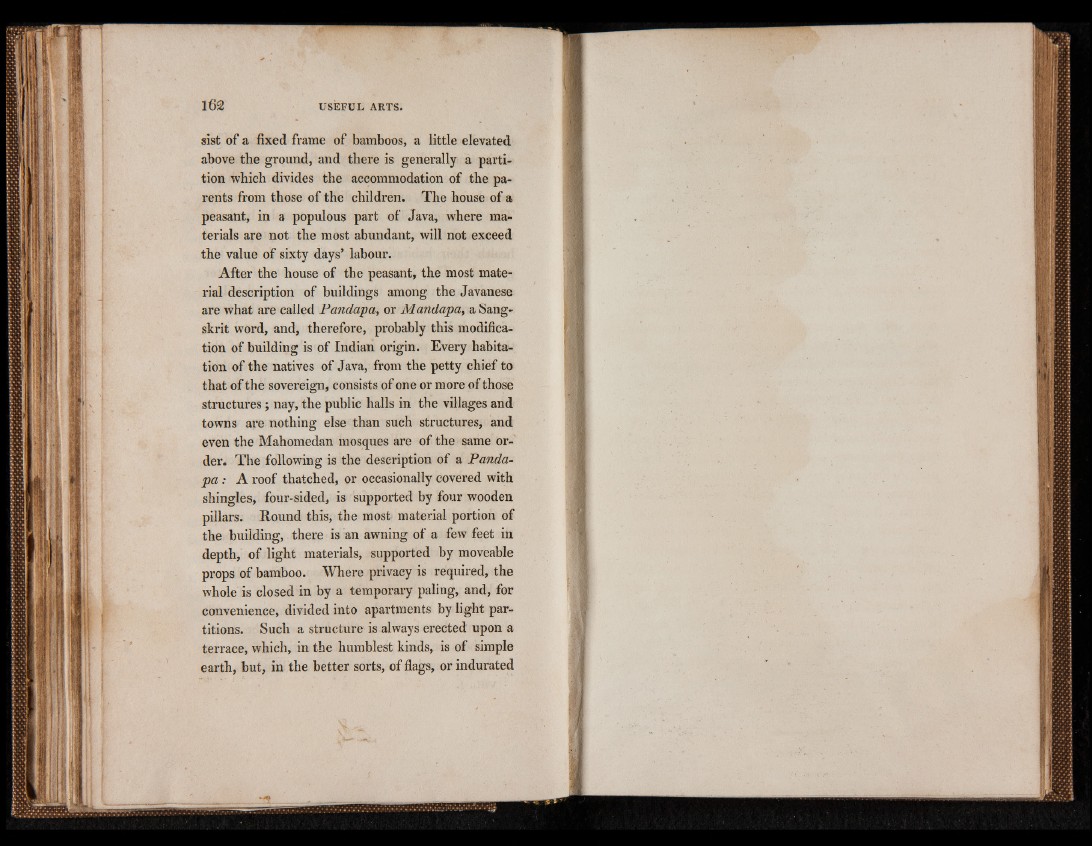
sist of a fixed frame of bamboos, a little elevated
above the ground, and there is generally a partition
which divides the accommodation of the parents
from those of the children. The house of a
peasant, in a populous part of Java, where materials
are not the most abundant, will not exceed
the value of sixty days’ labour.
After the house of the peasant, the most material
description of buildings among the Javanese
are what are called Pandapa, or Mandapa, a Sang-
skrit word, and, therefore, probably this modification
of building is of Indian origin. Every habitation
of the natives of Java, from the petty chief to
that of the sovereign, consists of one or more of those
structures ; nay, the public halls in the villages and
towns are nothing else than such structures, and
even the Mahomedan mosques are of the same order.
The following is the description of a Pandapa
: A roof thatched, or occasionally covered with
shingles, four-sided, is supported by four wooden
pillars. Round this, the most material portion of
the building, there is an awning of a few feet in
depth, of light materials, supported by moveable
props of bamboo. Where privacy is required, the
whole is closed in by a temporary paling, and, for
convenience, divided into apartments by light partitions.
Such a structure is always erected upon a
terrace, which, in the humblest kinds, is of simple
earth, but, in the better sorts, of flags, or indurated